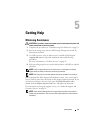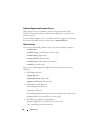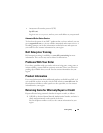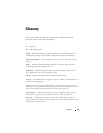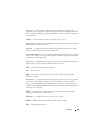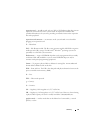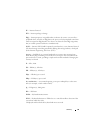
88 Glossary
BIOS — Basic input/output system. Your system’s BIOS contains programs stored on
a flash memory chip. The BIOS controls the following:
• Communications between the processor and peripheral devices
• Miscellaneous functions, such as system messages
bit — The smallest unit of information interpreted by your system.
blade — A module that contains a processor, memory, and a physical disk. The
modules are mounted into a chassis that includes power supplies and fans.
BMC — Baseboard management controller.
boot routine — A program that clears all memory, initializes devices, and loads the
operating system when you start your system. Unless the operating system fails to
respond, you can reboot (also called warm boot) your system by pressing
<Ctrl><Alt><Del>. Otherwise, you must restart the system by pressing the reset
button or by turning the system off and then back on.
bootable diskette — A diskette that is used to start your system if the system will not
boot from the physical disk.
BTU — British thermal unit.
bus — An information pathway between the components of a system. Your system
contains an expansion bus that allows the processor to communicate with controllers
for the peripheral devices connected to the system. Your system also contains an
address bus and a data bus for communications between the processor and RAM.
C — Celsius.
cache — A fast storage area that keeps a copy of data or instructions for quick data
retrieval. When a program makes a request to a physical disk for data that is in the
cache, the disk-cache utility can retrieve the data from RAM faster than from the
physical disk.
CD — Compact disc. CD drives use optical technology to read data from CDs.
cm — Centimeter(s).
cmos — Complementary metal-oxide semiconductor.




